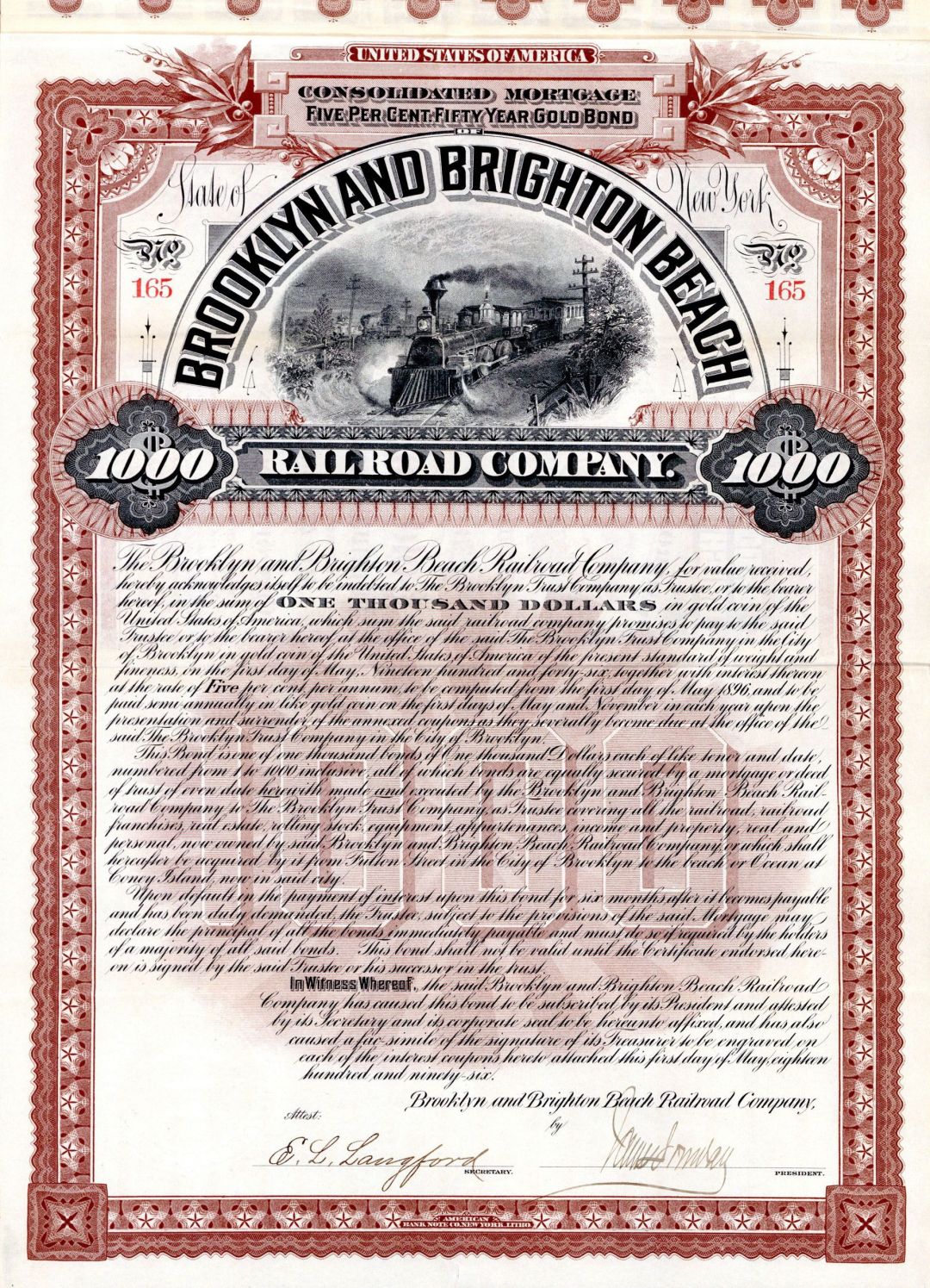 Brooklyn and Brighton Beach Railroad Co. - 1896 dated $1,000 Bond (Uncanceled)
Brooklyn and Brighton Beach Railroad Co. - 1896 dated $1,000 Bond (Uncanceled)
Inv# RB5168
Bond
$1,000 5% Bond was payable in U.S. Gold Coin. Uncanceled. Attractive vignette and borders by American Bank Note Co. Numerous coupons. Superb! Great title and so popular!
The BMT Brighton Line, also known as the Brighton Beach Line, is a rapid transit line in the B Division of the New York City Subway in Brooklyn, New York City, United States. Local service is provided at all times by the Q train, but is joined by the B express train on weekdays. The Q train runs the length of the entire line from Coney Island–Stillwell Avenue to the Manhattan Bridge south tracks. The B begins at Brighton Beach and runs via the bridge's north tracks. The line first opened in 1878 as a two-track surface-level excursion railroad called the Brooklyn, Flatbush and Coney Island Railway, transporting riders from Downtown Brooklyn via a connection with the Long Island Rail Road (LIRR) to the seaside resorts at Coney Island. When its connection with the LIRR was severed in 1883, the line became the Brooklyn and Brighton Beach Railroad, which was eventually acquired by the Brooklyn Rapid Transit Company (BRT, later Brooklyn–Manhattan Transit Corporation [BMT]). From 1903 to 1908, all of the original line's grade crossings were eliminated; This project also widened the line from two to four tracks from Church Avenue to Sheepshead Bay; From 1918 to 1920 the portion of original open-cut right-of-way from Church Avenue to Prospect Park station was widened to four tracks and a new subway alignment was built north of the Prospect Park station. The northern part of the original line became the modern-day BMT Franklin Avenue Line, which still runs today. In subsequent years, numerous improvements were made to the Brighton Line. Read more at https://en.wikipedia.org/wiki/BMT_Brighton_Line
A bond is a document of title for a loan. Bonds are issued, not only by businesses, but also by national, state or city governments, or other public bodies, or sometimes by individuals. Bonds are a loan to the company or other body. They are normally repayable within a stated period of time. Bonds earn interest at a fixed rate, which must usually be paid by the undertaking regardless of its financial results. A bondholder is a creditor of the undertaking.










Ebay ID: labarre_galleries